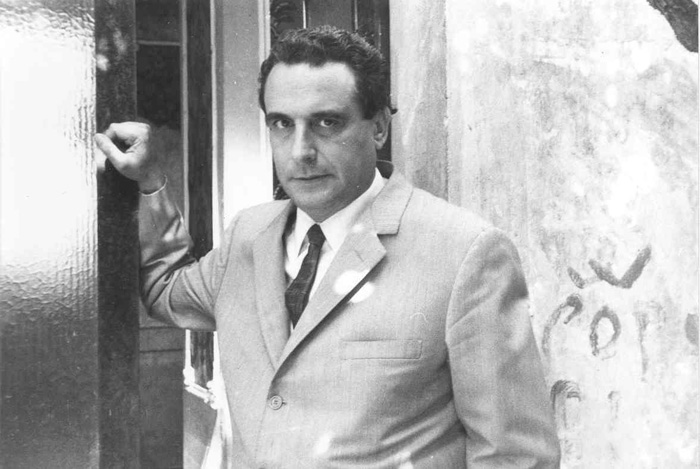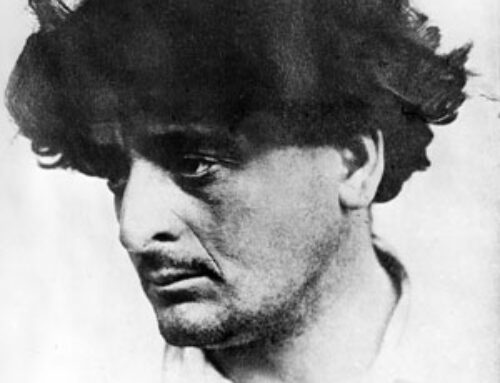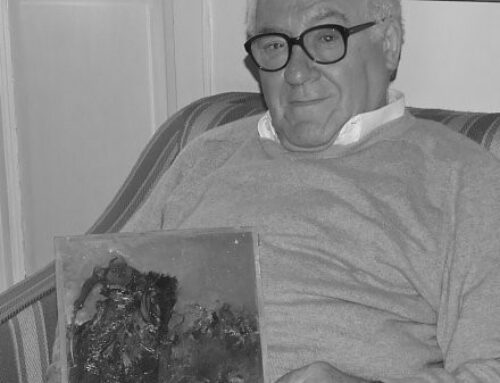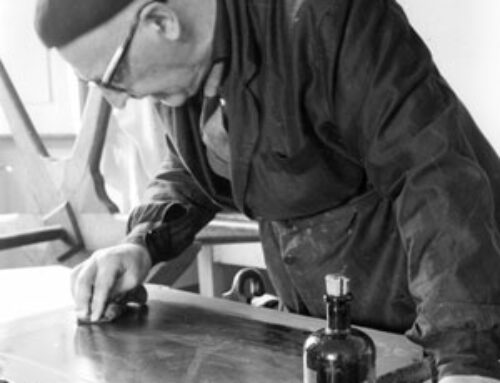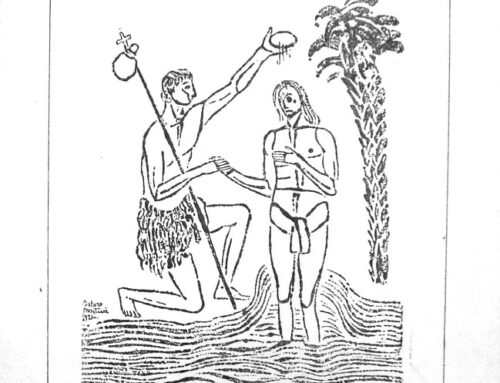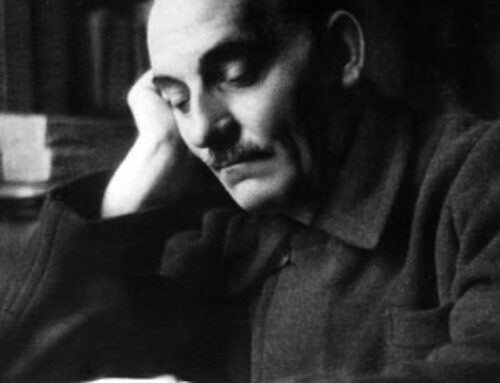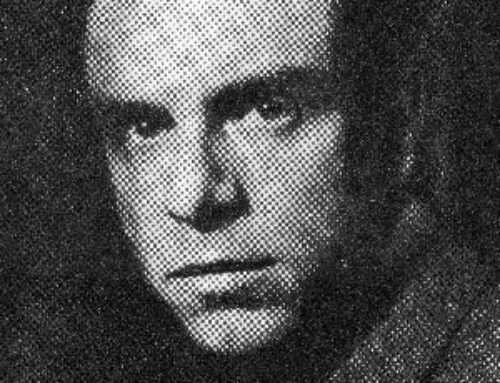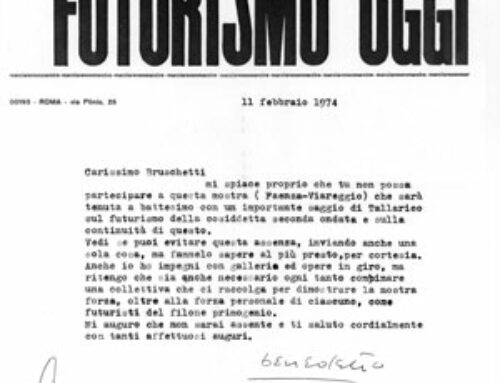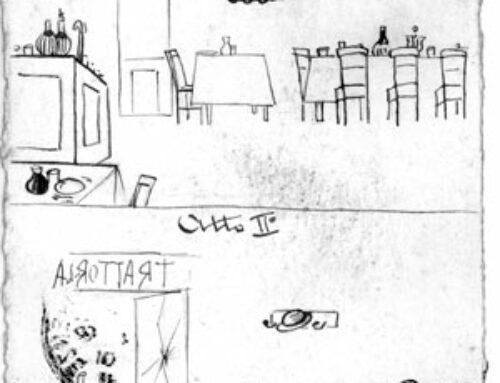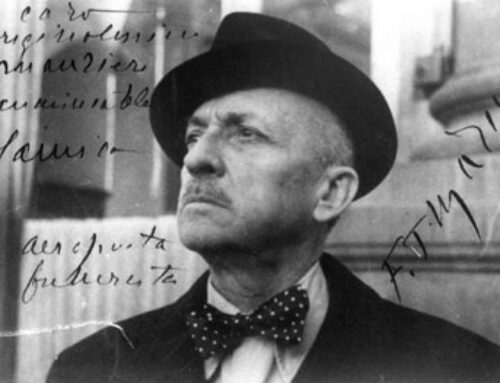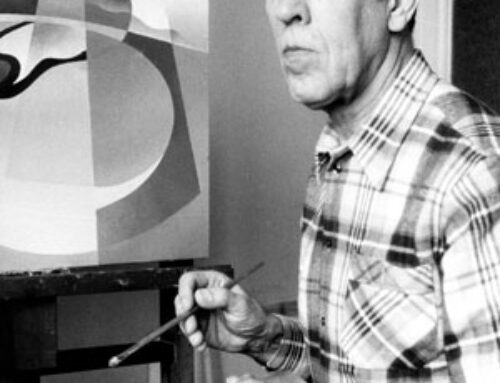(Rome 1915 – Rome 2002). The Marcello Venturoli Fund, consisting of archives, library and photo library, was donated by the writer’s heirs, sons Francesco and Paolo, to the Primo Conti ETS Foundation of Fiesole in March 2013. The records, formerly kept at homes in Rome and Ostia, are at the Foundation and, thanks to the Region of Tuscany’s awarding of two grants, it has been possible to carry out the sorting of the inter corpus of documents currently accompanied by detailed consistency lists and the partial SBN filing of the Library.
Born in Rome in 1915 and graduated in Law in 1940, Venturoli paralleled his interests in the literary and especially the artistic scene: he was in fact an art critic, journalist, essayist, poet and novelist.
With the essay “Le acqueforti di Bartolini” (1941) followed by “Viaggio intorno alla Quadriennale” (1943) Venturoli inaugurated his activity through a new method of doing art criticism, thanks to the daily frequentation with the artists, observed and known in their creative phase, in their studios or in galleries, he developed a direct and immediate style of reading, in which the daily life of the artists and the analysis of the qualities of their works are interwoven; recall in this regard “Poaching Interviews” (Sandron, 1946) in which criticism is precisely connected to the chronicle of Roman artistic activity in the years 1944-1945 with a journey through the painters’ studios.
He then collaborated with numerous magazines, in particular he edited, since its founding (1948), the art criticism pages of the daily newspaper “Paese Sera,” maintaining a strong autonomy of judgment that led him to leave the newspaper in 1963.Among the publications born collecting his articles are “Dagli Impressionisti a Picasso”(Nistri-Lischi 1953), “Personaggi e vicende dell’arte moderna” (Nistri-Lischi, 1965), “Il viaggiatore in arte” (Rizzoli, 1966), “Tutti gli uomini dell’arte” (Rizzoli, 1968), “Le Biennali raccontate” (Riccitelli, 1986).
In the mid-1960s, he retired to his home in Ostia where he resumed his literary activity, which had already begun with “I giorni di Ignazio” (Sandron, 1945) the story of a fronde during the German occupation of Rome. Then came out the novels “Lo sprecadonne” (Rizzoli, 1965) and “Dietro il silenzio” (Rizzoli, 1968), to the 1970s dates his most committed novel “Il libro di Giona.” He resumed publishing novels with Newton Compton, remembering “I, Sappho” (1992) and “The Star of Judith”(1994), both finalists for the Strega Prize.
In 1951, “Dictionary of Fear” was published, with which he won the Viareggio Prize: centered on the exchange of letters with Ruggero Zangrandi relating to the years 1949-1951, the epistolary conversation realizes an ideological dispute between liberalism and communism. In 1957 he again won the Viareggio Prize with “La patria di marmo – 1870/1911,” an essay that satirically recounts the colorful affair of the Vittorio Emanuele monument in Rome against the backdrop of forty years of national life. The last work concerning the political sphere is an essay on the history of Italian parliamentary custom within the volume “Montecitorio: men and facts” (1970), which collects contributions from leading Italian historiographers.
His poetic beginnings date back to his university days, when Venturoli published a few poems in “La Fiera letteraria”; he would return to publishing collections only from the 1970s, recalling “Canto plurale” (1976), “Il fiore buio” (1979) Pisa prize, “Il filo iridato” (1982) Circe Sabaudia prize, “Racconti in versi” (1985) Rhegium Julii prize, “Come dal giorno prima” (1988) Camaiore prize; all appeared at Edizioni L’Astrogallo in Ancona.
In his work as a curator and promoter of exhibition events, Venturoli has also published important monographs on prominent authors in the contemporary art world. Posthumously published in 2007, edited by his son Paul, is the volume “The Critic at Home” (Campanotto), completed in January 1996, a detached and serene reflection on art making by a critic who always firmly believed in the close relationship between art and life. The last volume he edited is “Letters to the Postmistress” (L’Astrogallo, 2002).
He died in Rome in 2002. (Biographical Sheet edited by Eleonora Pancani).

